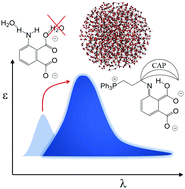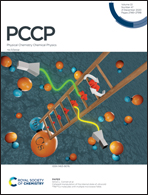On the chemiluminescence emission of luminol: protic and aprotic solvents and encapsulation to improve the properties in aqueous solution†
Abstract
Luminol is a popular molecule that is currently gaining further interest due to its potential role for non-invasive cancer treatments. Design of more efficient derivatives in this context would benefit from a clear knowledge on the origin of the distinct intensity and spectroscopic properties in protic and aprotic solvents observed experimentally, which are still not rationalized. By efficiently combining molecular dynamics, quantum methodologies based on density functional theory and multiconfigurational quantum chemistry and hybrid approaches, and developing herein a computational approach for accurately determining “molar negative extinction (or gain) coefficients of emission”, we firstly demonstrate that the amino and imino forms of the 3-aminophthalate dianion are responsible for the chemiluminescence in protic and aprotic medium, respectively. Secondly, we show that the coupling between the adjacent amino and carboxylate groups of luminol existing in aprotic solvents must be kept in aqueous solution to increase the chemiexcitation and emission intensity. Thirdly, modifications of luminol are proposed and simulated showing improved performances as compared to the parent molecule (stronger emission electronic transition and longer emission wavelengths) under the physiological conditions of relevance in biological and medical applications.



 Please wait while we load your content...
Please wait while we load your content...